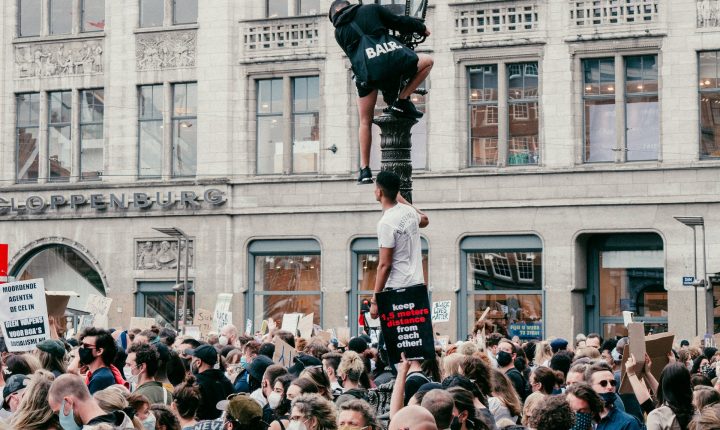Authority figures are like people in their communication
June 12, 2020

How will the demonstration against racism and police brutality on the Amsterdam Dam be written in the history books? Which managerial dilemmas arose on and after Whit Monday in the Netherlands?
During the emergency debate during the Amsterdam council meeting on Wednesday June 10th about the anti-racism demonstration on the Dam, a humble mayor Femke Halsema expressed regret, drawing lessons for the future. “The images on the Dam were painful to see. I am fully responsible for that. I regret that this has happened. The municipality should have made better use of its own means of communication,” Halsema stated plainly.
Four communication lessons about the demonstration on the Dam during COVID-19
1. Only externally communicate validated information
In the decision-making regarding conflicting interests during the Dam demonstration, confusion arose because non-validated information was communicated. To decide whether or not to enforce the RIVM guidelines, a “consultation” took place between the mayor and minister Ferd Grapperhaus of Justice and Security. According to the law, no decision has yet been taken in the event of a consultation and as a result the public had the sense that Halsema communicated decisions approved by the Minister.
2. App in a goal-oriented and purposeful way in crisis situations
The Openness of Government Act, a Wob decision, has become a nationally known law since Whit Monday. This raises the question whether ‘management by WhatsApp’ for formal regulations can also be leading in crisis situations. By revealing the app traffic between Halsema and Grapperhaus, media analysis revealed how different communication styles came about. The intention is that communication from a point of common interest contributes to the dissemination of a uniform image.
3. Communicate from an advisory perspective
The medical sector is once again showing leadership about the possibility of new corona infections. Medical professionals give distinct advice, without communicating in a tone of reproach. After the Dam demonstration, Ernst Kuipers, chairman of the board of Erasmus MC, clearly states: “We must re-start the economy and society in a gradual manner. It is not smart and not in accordance with agreements to be on the Dam with five thousand people. Let’s not take this as an example.” Prime Minister Mark Rutte also once again showed that he is ‘the father of the fatherland’ with a clear position. “The virus does not take crowds on the Dam into account.” According to the prime minister, the one and a half meter society is therefore “non-negotiable.”
4. Always try to communicate ‘beyond your own pain threshold’
The Netherlands appreciated administrators who dare to put on the ‘hair shirt’. During the emergency debate on June 10th, media noted that Femke Halsema profusely did this in the Amsterdam council meeting, whereby she largely took the sting out of the debate. In addition, she already had the dyed-in-the-wool Amsterdam police chief Frank Paauw by her side. He admitted soon after the Dam demonstration that the data position was insufficient for proper decision-making. “We need to learn how we were able to underestimate the large influx of thousands of protesters,” said Paauw. This attitude also contributes to the public’s opinion to the cross-border to a “final solution” for combating this pandemic.
Although there were clearly conflicting interests present on the Dam, various media also conclude that it created sympathy for the way the Amsterdam urgent debate and dilemmas expressed were handled. This offers hope, so that we eventually can remember the anti-racism demonstration from the purpose for which it was intended.
Photo by Shane Aldendorff from Pexels.